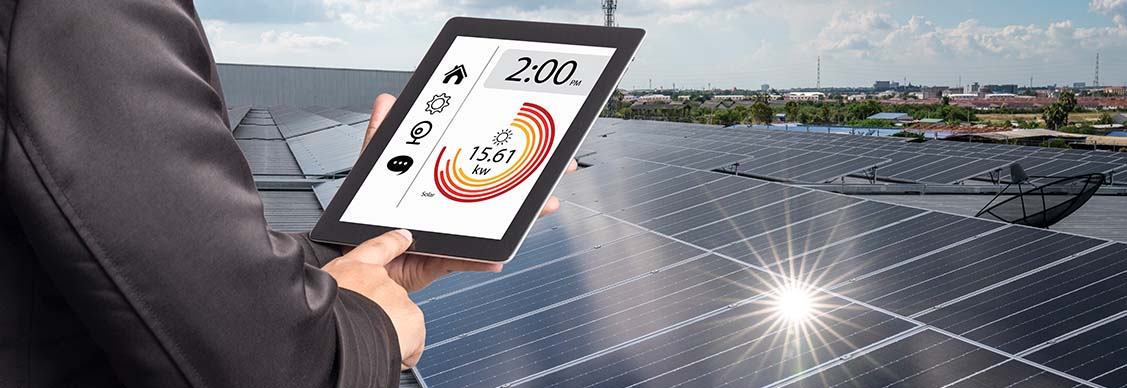How industrial and logistics firms are confronting high energy costs
Fuel prices are driving improvements and energy efficient retrofits
Companies worldwide have been facing a litany of headwinds – from supply chain disruptions and soaring inflation, to a spike in fuel costs.
But for manufacturers, retailers and logistics firms, the circumstances present especially acute challenges that have sent them scrambling for ways to reduce the impact on their bottom line.
In the U.K., six in 10 manufacturers say higher fuel costs are threatening their business, forcing them to cut production or stop operating altogether, according to manufacturing organisation MAKE. In Europe, 55% of energy consumed is imported, making warehouse occupiers especially vulnerable to price hikes at a time when rents are rising, creating significant impacts on total supply chain costs and overall competitiveness.
A supply chain survey by JLL and Reuters Events found energy costs were the second biggest concern (cited by two thirds of respondents). In response, many companies are looking to reduce costs through improved efficiencies. 63% of occupiers are reducing energy consumption, while 43% are looking to use more renewable energy.
“Logistics service providers, retailers and manufacturers are all prioritizing the reduction of energy use and intensity,” says Lisa Graham, head of industrial and logistics research for JLL EMEA.
Graham says the sector’s continued low vacancy rates and lack of available high-quality real estate assets mean 46% of those surveyed are having to refurbish their warehouses to become more efficient.
Smarter savings
Some areas are harder hit than others. For instance, refrigeration costs are a major issue in the fresh produce, food manufacturing and logistics sector.
“We’re certainly seeing higher demand for more energy efficient equipment,” says Alan Selby, industrial refrigeration sales director at JLL company Integral. “Firms are also seeking advice on how to drive reductions by fine-tuning existing kit and it’s likely to remain top of mind in the months ahead.”
Looking for more insights? Never miss an update.
The latest news, insights and opportunities from global commercial real estate markets straight to your inbox.
Across all subsectors, building sensors are increasingly being used to optimize energy consumption. “Occupiers are becoming more focused on technology that improves core operations by reducing overheads,” says Graham.
It’s a tactic that can pay dividends. In Northern Europe, one operator reduced consumption in a single warehouse by 21,695 kWh hours, saving €3,727 (US $3,933) per year just by using data from temperature sensors to optimize their heating system.
Smart industrial refrigeration controls are another useful application. “Sensors monitor the outside ambient temperature, then automatically adjust control parameters for optimum operational efficiency,” Selby says.
Motors that run power-hungry systems such as air-conditioning, fridges and fans account for 47% of global energy use and are notoriously wasteful. Higher energy tariffs have reduced the payback period for retrofitting smarter motors, making them increasingly attractive. Next-generation motors, such as those from Turntide Technologies, contain internet-enabled sensors that improve efficiency and can slash energy by an average of 64%.
Simple yet effective solutions
For unheated warehouse spaces, lighting typically dwarfs all energy uses, and can account for almost 50% of a building’s annual energy use. Yet consumption could feasibly be halved through simple upgrades, says Graham.
Investment Opportunities
German logistics firm DB Schenker recently completed a Smart LED lighting retrofit across 50 European sites, saving 80% of the energy needed to illuminate an area equivalent to 250,000 square meters.
Then there’s heating, cooling and ventilation systems, some of the biggest power draws. Selby says they’re advising operators to adjust traditional parameters for quick wins. Take refrigerated spaces, where “raising the temperature by three degrees can immediately generate a 9% reduction in energy use and cost, while staying safely within the correct limit,” he says.
However, ditching regular maintenance checks to cut costs isn’t advised. “Calibrating temperature probes for accurate readings, removing air from the refrigeration system and cleaning air coolers, heat exchangers and condensers, all helps optimize equipment to avoid consuming unnecessary power.”
Educating staff on best practices also helps.
“Poor door control in warehousing facilities is a common mistake,” Selby says. “You’re literally burning through energy and cash to maintain a steady temperature.” Stacking boxes up around the evaporator in cold stores also restricts air circulation, causing equipment to work harder than necessary.
Renewed interest in renewable energy
Many warehouse operators with suitable weight-bearing roofs are considering installing photovoltaics (PV) panels to offset their energy costs. Take 4PL specialist Newcorp Logistics, who covered the huge roof expanse of their Netherlands warehouse with solar panels capable of generating enough electricity for 283 households.
Segro transformed a 34-year-old unit in Slough, U.K., into an energy performance certificate (EPC) rating of A+ by installing LED lights with PIR and daylight sensors, plus 136 kilowatt-peak (kWp) of PV solar panels. It now generates more energy than it consumes.
Food manufacturer Pilgrim’s Pride are rolling out solar and biogas across their portfolio with all electricity in their UK facilities already coming from renewable sources. In the U.S., their three West Texas facilities have recently been kitted out with solar panels expected to generate 786,938 megawatts of renewable electricity annually.
While older buildings are less easily adapted and may require a higher level of retrofit investment, the savings can be significant. In the U.K. it’s estimated that a full net zero carbon refurbishment could cut energy use intensity (EUI) in a typical late 1970s distribution warehouse by nearly 80%.
“Currently, utility bills are the main motivator, but the lack of non-ESG compliant buildings, coupled with a scarcity of suitable land for development of new prime warehousing, means the need for retrofitting is only likely to grow,” Graham says.
Contact Lisa Graham and Alan Selby
Head of Industrial and Logistics Research, JLL EMEA and Industrial Refrigeration Sales Director, IntegralWhat’s your investment ambition?
Uncover opportunities and capital sources all over the world and discover how we can help you achieve your investment goals.




